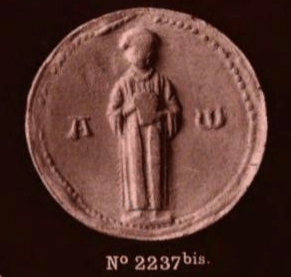Philip I, Count of Savoy facts for kids
Quick facts for kids Philip I |
|
|---|---|

Seal of Philip as Archbishop of Lyon
|
|
| Count of Savoy | |
| Reign | 1268–1285 |
| Predecessor | Peter II |
| Successor | Amadeus V |
| Born | 1207 Aiguebelle |
| Died | 16 August 1285 Roussillon |
| Spouse | Adelaide, Countess Palatine of Burgundy |
| Father | Thomas, Count of Savoy |
| Mother | Margaret of Geneva |
Philip I was an important ruler who became the Count of Savoy from 1268 to 1285. He was born in 1207 and passed away in 1285. Before becoming a count, he held important positions in the church, serving as a bishop and an archbishop.
Contents
Philip's Early Life and Church Career
Philip was born in Aiguebelle, a town in Savoy. He was the eighth and last son of Count Thomas I of Savoy and Margaret of Geneva. His family planned for him to have a career in the church.
Starting His Church Path
In 1236, Philip's brother, William, used his influence with Henry III of England to help Philip get church jobs in England. Later, in 1240, Philip was chosen to be the Bishop of Lausanne. His brother Peter supported this. However, Philip had to give up that role. Instead, he became the Bishop of Valence in 1241. Another brother, Thomas, helped Philip become a chancellor in Flanders.
Helping the Pope
In 1244, Pope Innocent IV had to leave Rome for safety. Philip convinced his brother, Count Amadeus IV of Savoy, to let the Pope travel through Savoy. Philip then went with the Pope to Lyon to make sure he was safe. Because of Philip's help, Pope Innocent made sure Philip was chosen as the Archbishop of Lyon in 1245.
While serving as Archbishop, Philip worked to help his region grow. He focused on making trade easier. For example, in 1248, he worked with Aymar III of Valentinois to lower taxes on food traders. Over the next few years, he also gave special agreements, called charters, to towns. These charters helped the towns manage themselves and grow.
Becoming Count of Savoy
Unexpectedly, Philip became the next in line to rule the County of Savoy. Because of this, he left his church jobs. On June 12, 1267, he married Countess Adelaide of Burgundy.
In 1268, Philip officially became the Count of Savoy. In 1272, he also gained control of the County of Bresse. At first, he was very good at making Savoy stronger and larger. However, in 1282, several powerful rulers joined together against him. These included King Rudolph I, Charles of Anjou, the dauphin of Viennois, and the counts of Geneva.
Philip did not have any children. In his will, he asked Queen Eleanor of Provence and her son King Edward I of England to decide who would inherit his lands. They chose his nephew, Amadeus, to be the next Count. Philip passed away in Roussillon in 1285.
See Also

- In Spanish: Felipe I de Saboya para niños

